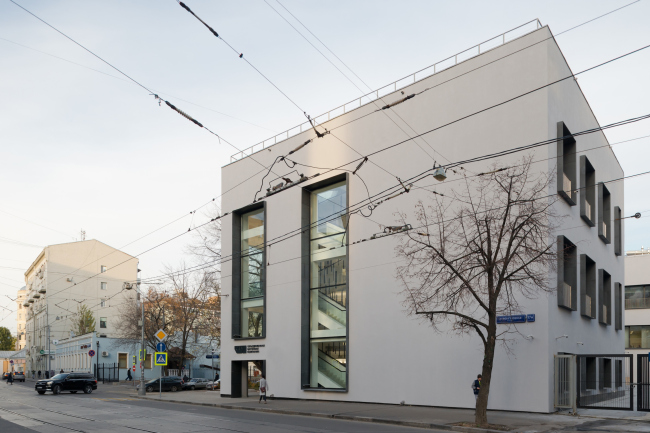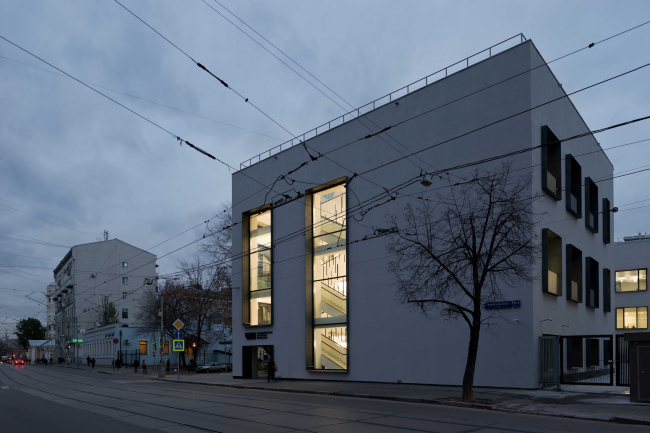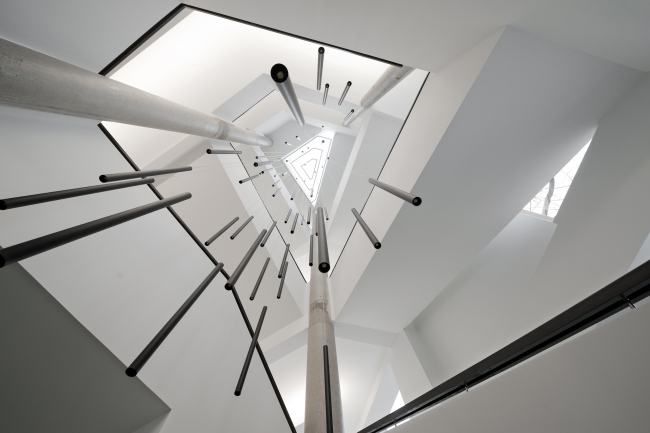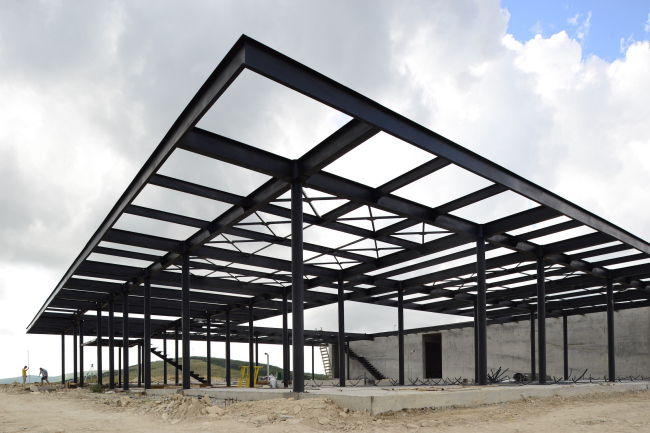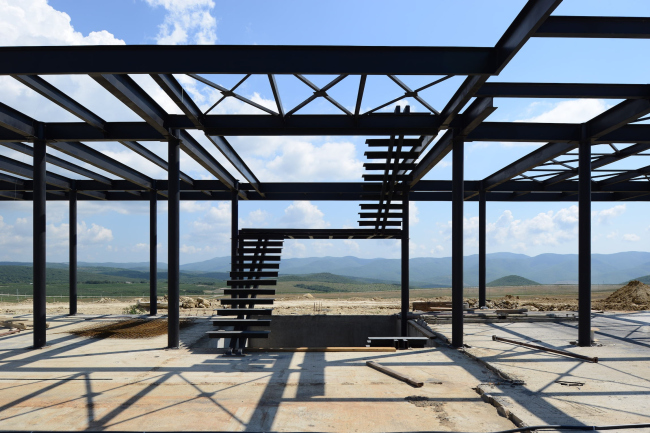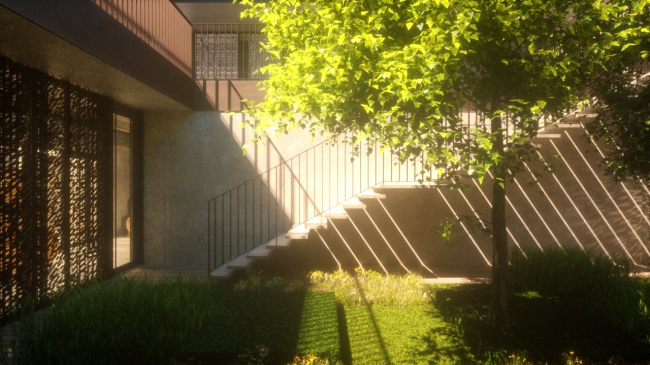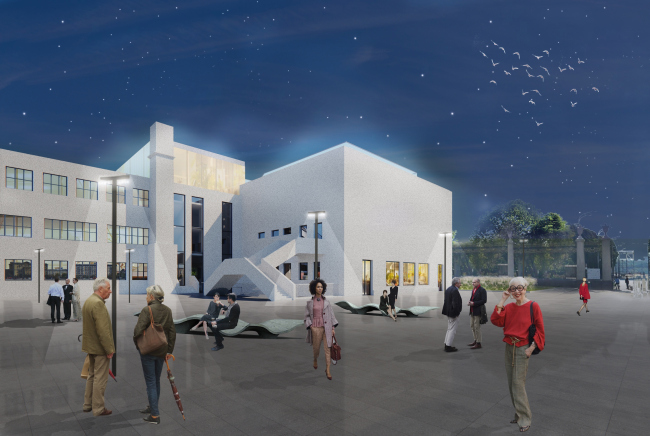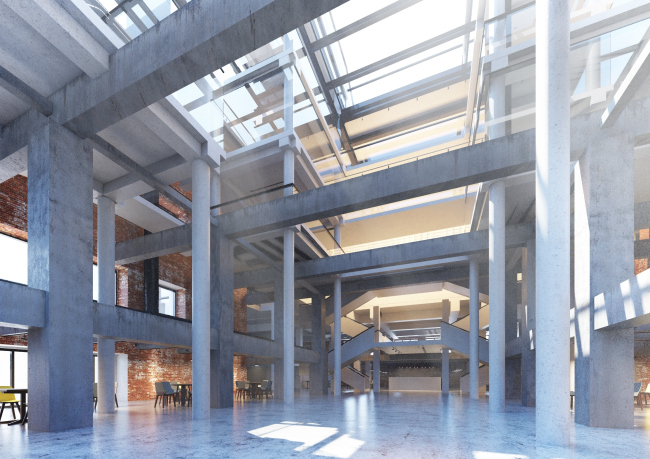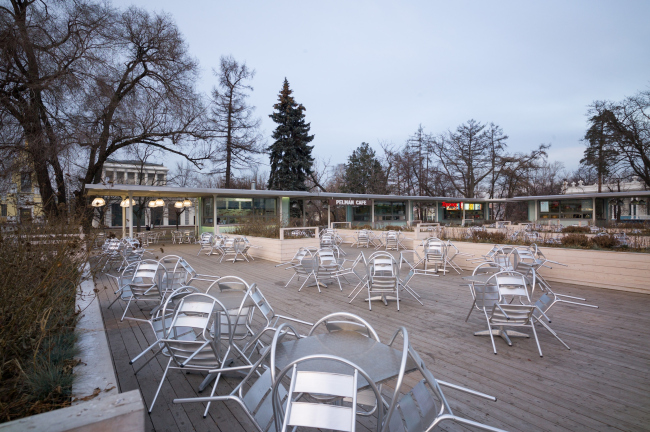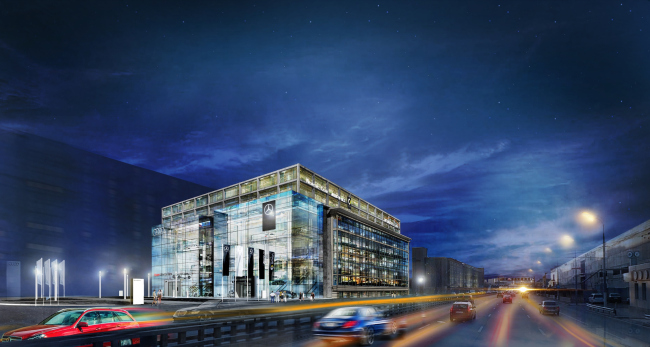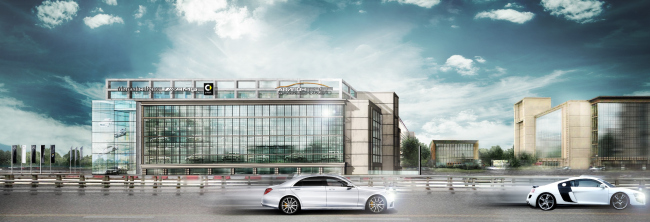|
Published on Archi.ru (https://archi.ru) |
|
| 02.02.2017 | |
|
Kleinewelt Architekten: "In each of our projects we try to fix the world" |
|
|
Elena Petukhova |
|
| Architect: | |
| Sergey Pereslegin | |
| Nikolay Pereslegin | |
| Georgy Trofimov | |
| Studio: | |
| Kleinewelt Architekten | |
|
In this issue, we are speaking to Nikolai and Sergey Pereslegins and George Trofimov, partners and founders of Kleinewelt Architekten, about their outlook on what matters most in the profession of an architect. The architectural company Kleinewelt Architekten was created in 2013 by three partners: Nikolai and Sergey Pereslegins and George Trofimov. Over the last few years, the company has been able to have its projects built in Moscow as well as in the regions, and won a few large-scale closed competitions for privately owned companies.  The founders of Kleinewelt Architekten: Nikolai Pereslegin, Sergey Pereslegin, and George Trofimov. Photo © K. ShelukhinReconstruction of the the former building of a communal kitchen at the Novokuznetskaya Street, 2014 Kleinewelt Architekten. Photo © I. IvanovReconstruction of the the former building of a communal kitchen at the Novokuznetskaya Street, 2014 Kleinewelt Architekten. Photo © I. IvanovReconstruction of the the former building of a communal kitchen at the Novokuznetskaya Street, 2014 Kleinewelt Architekten. Photo © I. Ivanov– At which point do you get down to the design stage? Nikolai Pereslegin: Our company has a rather strict set of management rules and all the workflows are clearly organized, first of all, in terms of meeting the deadlines. And this gives us the opportunity to work without distraction. Sergey Pereslegin: Yes, you can go on accumulating your information forever. But at some point we realize that we have enough information and we can get down to actual work. George Trofimov: And, of course, by all means, we do not downplay the role of intuition in our creative process. – How does intuition fit in with the design project narrative? George Trofimov: Well, and how are the great discoveries made? Nobody knows! We gather the information, we think it over, and then we start developing some ideas. The creative search begins. Reconstruction of the the former building of a communal kitchen (built in 1932) at the Novokuznetskaya Street, 2014 Kleinewelt Architekten. Photo © I. IvanovA winery in Haykadzor (Armenia). Construction, 2013. Kleinewelt Architekten. Photo © I. IvanovA winery in Haykadzor (Armenia). Construction, 2013. Kleinewelt Architekten. Photo © I. IvanovA winery in Haykadzor (Armenia). Construction, 2013. Kleinewelt Architekten. Photo © I. IvanovA winery in Haykadzor (Armenia). Project, 2013. Kleinewelt Architekten. Photo © I. Ivanov– So how do you view shape per se then? How important is it to you? Nikolai Pereslegin: We think discussing separately your shapes, your planning, and your materials to be an unprofessional approach. We do not consider ourselves as some creators of great art who can draw, say, a beautiful curve, and then everybody is obliged to come running to implement it. But we do our work really well. We bring together a huge number of really different elements and solutions in order to create a really interesting high-quality space. What is the most important, however, is the feeling, the mood that it creates for the people, which ultimately defines their lifestyle. We are the producers of life, no less. A winery in Haykadzor (Armenia). Project, 2013. Kleinewelt Architekten. Photo © I. IvanovVelikan Movie Theater in Gorky Park. Project of reconstructing the multifunctional movie theater situated in the administration building of Gorky Park, 2015 © Kleinewelt Architekten– And what kind of mood should people be put into? What feelings are your projects supposed to inspire? Nikolai Pereslegin: What matters to us are the basic human values, and we want our projects to make people kinder, make them think of building and creating rather than destroying and conflicting. We try to appeal to the highest feelings and values – these notions might be a bit on the abstract side but you still can get them across through these or those specific design solutions. Combining our knowledge of technology and the emotion that we put into our work, we try to build in such a way that the life that will take place in our buildings and spaces would make people happy every living second. Velikan Movie Theater in Gorky Park. Project of reconstructing the multifunctional movie theater situated in the administration building of Gorky Park, 2015 © Kleinewelt ArchitektenA pavilion at VDNKh, Construction, 2014. Kleinewelt Architekten. Photo © A. Belov– Generally, what is Kleinewelt Architekten is about? What words would you use to describe your architecture? George Trofimov: Of course, we all are individuals but any of our projects is the result of collective work of a whole team of specialists. Any solution that one can see in our projects is the result of repeated discussions and heated debates. We always organize our inner competitions when for about an hour the whole company goes wild, everybody doing his sketches, and then we pick what we think is the best solution and we choose the direction in which to go. Nikolai Pereslegin: The identity of our architecture is formed thanks to the three layers that our every project consists of. The first layer is science. The second layer is all about our meditation and our emotions. And the third layer is actually about working on the project. Thanks to this approach, our every solution, our every façade, and our every space are rationally justified and individual. Sergey Pereslegin: A huge mark is also made by the inner code of honor that has formed in the course of multiple discussions and that covers the basic principles and fundamentals of our work. For example, we know for sure that under no circumstances shall we do an imitation selling plastic as wood or stone. This is what I would call “material integrity”.  A pavilion at VDNKh, Construction, 2014. Kleinewelt Architekten. Photo © A. BelovDealership center of Mercedes-Benz and Audi on the territory of ZIL Plant. Project, 2016 © Kleinewelt Architekten– Are you ever confronted with a problem of finding a unique architectural language of your own? George Trofimov: This problem is solved within the framework of each individual project, and it is strongly dependent on the specific architectural task. For example, if the location or the function calls for some bold statement, we, of course, will not be shy to go ahead and make it. Nikolai Pereslegin: In each of our projects, we try mend a piece of time-torn or time-worn fabric in order to help this fabric live longer. In each of our projects, we try to fix the world, and each time we try to find the right wrench or the right screwdriver so as to make things fit perfectly, and, God forbid, íè â êîåì ñëó÷àå íå ñîðâàòü. But when we understand that there is nothing left to fix here, and the only option is to create something entirely new, we just go ahead and do it, creating this fragment of the world from scratch. And if we commit ourselves to making a new world, make no mistake, it will be a very good one! Dealership center of Mercedes-Benz and Audi on the territory of ZIL Plant. Project, 2016 © Kleinewelt Architekten |
|
